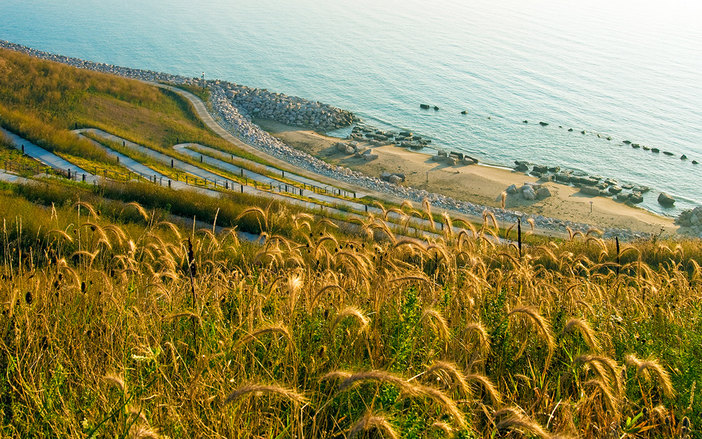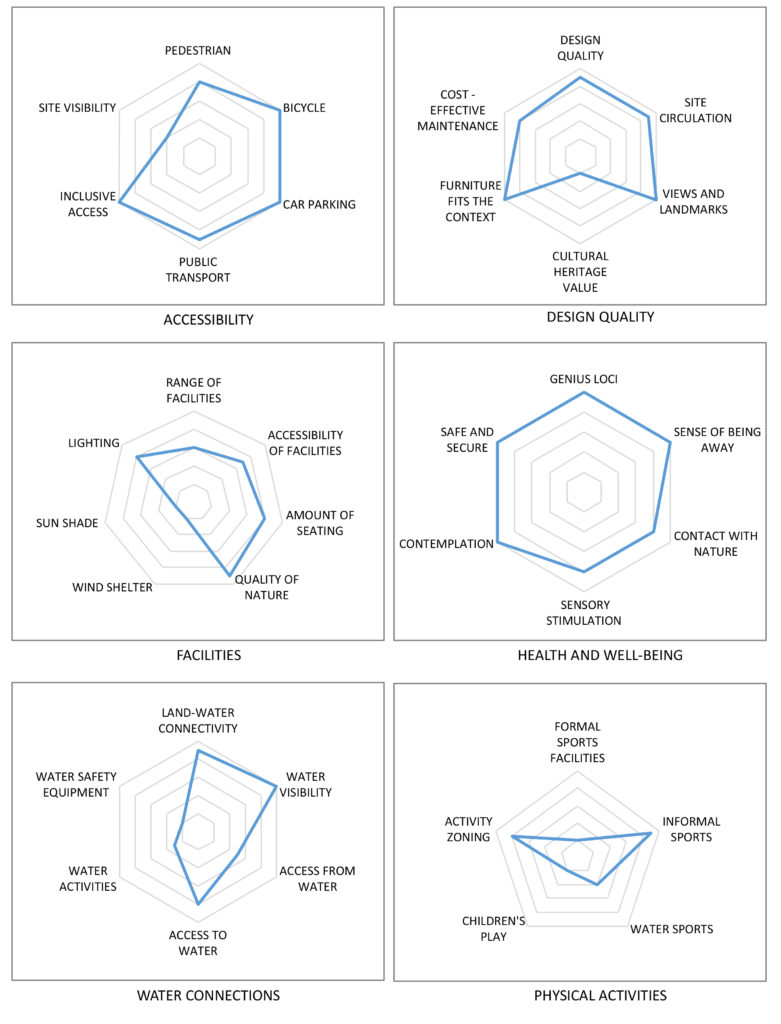
Architect
Smith Group
Type of Area
Natural lake
Land/water interaction
Promenade
Riprap
Sandy beach
Built Environment Types
Low built
High green
Scale of Impact
Place
District/ neighbourhood
City
Intervention Scale (Spatial)
Large site
Project Types
Lakefront development
Public space regeneration
Habitat creation/restoration
Urban/ Rural
Urban fringe
Visibility and Openness
Fully open
Full horizon
Connecting the Beach: A Major Challenge Overcome.
This project, completed in 2010 was designed by JJR LLC, of Madison for Concordia University. The site comprises the top, slopes and bottom of a high, steep bluff lying above Lake Michigan. The height of the bluff is 40m which made accessibility down to the lakeshore from the university campus a major challenge. In fact, the project started for the purpose of slope stabilization but became a more complex design project with inclusive access, landscape restoration, wetland and coastal area designs, storm water management and use of bluff-stabilizing native plant species.
The project connects the university with its main natural asset, the lakefront, for the university staff and students as well as the general public. The project provides beaches, hiking, fishing, swimming, wildlife observation, landscape viewing and educational resources.
The open air theatre built into the design is used as on outdoor classroom. The design features a series of zig-zag ramps traversed with a more direct access via steps. The theatre overlooks the lake and is located at the top. The paths incorporate drainage channels to collect the run off and are lit at night. The beach at the bottom is flanked by stone rip-rap stabilization structures.
Perception and Meaning
Accessibility
Legibility
Genius Loci
Health and Wellbeing
Tranquility
Restorativeness
Aesthetic experience
Interaction with Water
Visual
Tactile: Partly in water

Website of the project:
https://www.smithgroup.com/projects/concordia-university-wisconsin-lakeshore-0
Google map reference
This project is rated very highly for accessibility except for the visibility from a distance (given the large lake). It also scores highly for its design apart from the lack of reference to cultural historical aspects – which given its location is no surprise.
The facilities are somewhat limited by the terrain and gradients and it lacks seating. It is also exposed and lacks any shade or shelter. It has excellent potential for health and well-being. Water accessibility is also rated highly apart from accessibility from the water – no jetties – and the range of possible activities in or on the water – due to the poor accessibility, it is assumed.
The range of possible physical activities is also necessarily limited by the terrain and nature of the design. This is a really good example of a project which overcomes huge challenges and results in a unique and sensitive solution that provides something special in an otherwise rather bland landscape.
